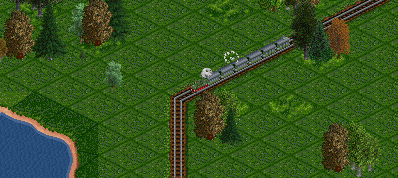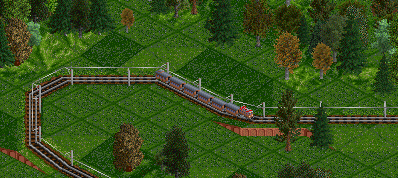These coaches are the first in the set to allow passengers and mail. There are not based on a distinct real world type, but rather a combination of types used in Prussia and Bavaria. The notes on the original types in the next section might therefore not be totally correct as far as using them as base for the types in the set is concerned.
The passenger coach might be based on a Bavarian type (Prussia ordered mainly four-axle coaches in the early 20th century). The Bavarian State Railways ordered coaches directly prior to World War I, which look very similar to what is in the game: two-axle coaches with open platforms on either end.
The mail coach is probably based on a Prussian design (the Bavarian ones did not have the higher roof that the coach in the game shows). These coaches were already part of the Prussian norms and standards in the early 1880s, which were later taken over by the Deutsche Reichsbahn. These standards described a two-axle baggage car of class Pwi.
Characteristics
|
|
Passagierwaggon |
| available by | 1920 |
|---|---|
| capacity | 30 |
| loading speed | 5 |
| speed limit | 100 kph |
| remarks | brown livery only with class E 62, class E 52, class E 16 |
|
|
Postwagen |
| available by | 1920 |
|---|---|
| capacity | 18 |
| loading speed | 3 |
| speed limit | 100 kph |
| remarks | brown livery only with class E 62, class E 52, class E 16 |
Images and screenshots

A steam engine of class 92 with a local train of four passenger coaches and a mail coach.

A class E 62 with a local train. When using the early Bavarian electric engines (E 62, E 52, E 16) the coaches are changed to a brown livery, as it was in use with the Bavarian State Railways.
Usage
These coaches are the only way to transport passengers and mail until 1925. Once the local coaches and long distance coaches become available, one should replace these as fast as possible, as the successors have way better capacity and higher speed limits.
